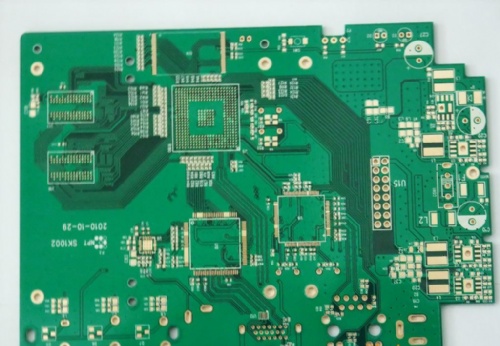 +86 755 2794 4155
+86 755 2794 4155  sales@knownpcb.com
sales@knownpcb.com
-
Shenzhen KNOWNPCB Technology Co., Ltd.
 +86 755 2794 4155
+86 755 2794 4155  sales@knownpcb.com
sales@knownpcb.com
 2025-05-21
2025-05-21
 899
899

Aging tests for printed circuit boards (PCBs) are essential procedures aimed at evaluating the long - term reliability and performance of PCBs under various stress conditions. These tests simulate the effects of extended usage, environmental factors, and electrical loads that PCBs may encounter during their operational life, helping manufacturers and engineers identify potential failures and improve product quality.
One of the most common aging test methods is thermal aging. In this method, PCBs are exposed to elevated temperatures for an extended period. Typically, the temperature is set well above the normal operating temperature, often ranging from 85°C to 150°C, depending on the application and the materials used in the PCB. The high - temperature environment accelerates the degradation processes within the PCB, such as the oxidation of metal traces, the deterioration of solder joints, and the thermal expansion and contraction of different materials. By monitoring the PCB's electrical characteristics, such as resistance, capacitance, and impedance, at regular intervals during the thermal aging process, engineers can detect any changes that may indicate potential failures. For example, an increase in the resistance of traces may suggest the formation of cracks or corrosion, while changes in capacitance can be a sign of dielectric material degradation.
Humidity - biased aging is another important test method. PCBs are placed in a chamber with controlled humidity levels, usually ranging from 85% to 95% relative humidity, and are also subjected to an applied electrical bias. The combination of high humidity and electrical stress can accelerate the growth of dendrites on metal surfaces, leading to short circuits. This test is particularly crucial for PCBs used in environments with high moisture content, such as in marine applications or outdoor electronic devices. During the test, the PCB's insulation resistance is closely monitored. A significant decrease in insulation resistance indicates the presence of moisture - induced electrical leakage, which can compromise the functionality of the PCB.
Electrical stress aging involves subjecting the PCB to continuous electrical loads, including high - voltage and high - current conditions. This test mimics the real - world electrical demands that the PCB will experience during operation. By applying electrical stress for an extended period, potential weaknesses in the PCB's electrical components, such as integrated circuits, resistors, and capacitors, can be identified. For instance, components may fail due to overheating caused by excessive current, or the PCB's traces may experience electromigration, a phenomenon where metal atoms move under the influence of an electric current, leading to open circuits over time.
Vibration and mechanical shock aging tests are also used to evaluate the mechanical durability of PCBs. PCBs are mounted on vibration tables or subjected to mechanical shocks to simulate the physical stresses they may encounter during transportation or operation in environments with vibrations, such as in automotive or aerospace applications. These tests can reveal weaknesses in the PCB's mechanical structure, such as cracks in the substrate, loose component connections, or damaged vias. By performing these tests, engineers can ensure that the PCB can withstand the rigors of its intended application and maintain its functionality over time.

Or call +86 755 2794 4155
Inquiry Now

